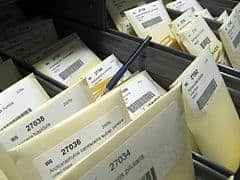With fewer than a dozen flowering plants out of 300,000 species accounting for 80 percent of humanity’s caloric intake, people need to tap unused plants to feed the world in the near future, claims Cornell University plant geneticist Susan McCouch in the Comment feature of the July 4 issue of Nature.
To keep pace with population growth and rising incomes around the world, researchers estimate that food availability must double in the next 25 years. The biodiversity stored in plant gene banks coupled with advances in genetics and plant breeding may hold the keys for meeting the demands of more food in the face of climate change, soil degradation and water and land shortages, according to the paper.
“Gene banks hold hundreds of thousands of seeds and tissue culture materials collected from farmer’s fields and from wild, ancestral populations, providing the raw material that plant breeders need to create crops of the future,” said McCouch.
For example, after screening more than 6,000 varieties from seed banks, plant breeders identified and crossbred a single wild species of rice, Oryza nivara; the result is a variety that has protected against grassy stunt virus disease in almost all tropical rice varieties in Asia for the past 36 years, the paper states. Similarly, by 1997, the value of using crop wild relatives as sources of environmental resilience and resistance to pests and diseases led to an estimated $115 billion in annual benefits to the world economy.
Though seeds are readily accessible in 1,700 gene banks throughout the world, “they are not used to their full potential in plant breeding,” McCouch said.
At present, it is difficult for breeders to make use of the wealth of genetic material in seed banks because of a lack of information about the genes in most plants and the traits they confer, she said. Due to the time and effort required to identify and then use wild and unadapted genetic resources, “a breeder must have a good idea about the genetic value of an uncharacterized resource before attempting to use it in a breeding program,” McCouch said.
In the paper, McCouch and colleagues outlined a three-point plan to address these constraints:
- A massive genetic sequencing effort on seed-bank holdings to document what exists in the collections, to strategically target experiments to evaluate what traits a plant has (called phenotyping) and to begin to predict plant performance.
- A broad phenotyping initiative, not only of the gene bank holdings, but also of the progeny generated from crossing wild and exotic materials to adapted varieties targeted for local use.
- An internationally accessible informatics infrastructure to coordinate data that are currently managed independently by gene-bank curators, agronomists and breeders.
The estimated cost for such a systematic, collaborative global effort to help characterize the genetic resources needed to feed the future is about $200 million annually, according to McCouch.
“This seems like great value, given that as a society we spend about $1 billion each year to run CERN‘s Large Hadron Collider near Geneva, Switzerland, and up to $180 million on a single fighter jet,” said McCouch.


